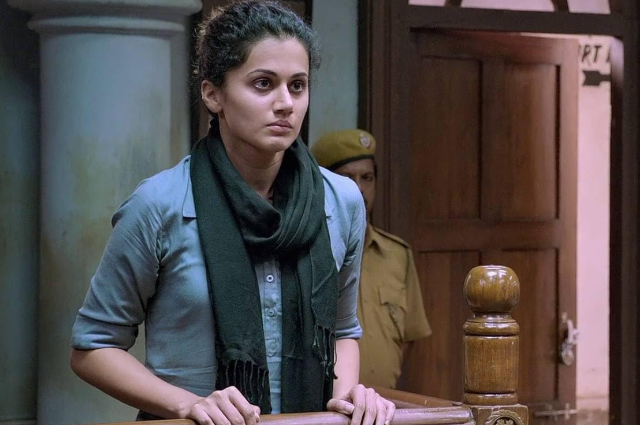Bollywood, the Hindi-language film industry based in Mumbai, is a global phenomenon with a reach that spans far beyond the Indian subcontinent. Known for its larger-than-life narratives, colorful song-and-dance sequences, and dramatic portrayals of love and family, Bollywood has played a significant role in shaping the culture and social fabric of India. However, as much as the industry has contributed to entertainment and cultural exchange, it has also been criticized for perpetuating certain harmful stereotypes and unrealistic ideals. The question arises: Is Bollywood a force for good or bad?
The Positive Influence of Bollywood
One of the most prominent ways Bollywood has had a positive impact is by promoting and preserving Indian culture. Bollywood films have long served as a medium for showcasing various aspects of India’s rich and diverse heritage, from festivals and rituals to regional customs and traditions. Films such as Lagaan (2001) and Jodhaa Akbar (2008) highlight historical events, educating audiences about India’s past. More contemporary films like Dil Dhadakne Do (2015) and Zindagi Na Milegi Dobara (2011) focus on modern-day issues like family dynamics, relationships, and personal freedom. Through its portrayal of both traditional and contemporary life, Bollywood offers a window into Indian society, helping to foster a sense of cultural identity and pride for audiences in India and around the world.
In addition to cultural promotion, Bollywood has increasingly focused on creating social awareness around key issues. Over the years, Bollywood has addressed a wide range of topics, from gender equality and women’s empowerment to mental health and societal change. Movies like Piku (2015) and Pink (2016) raise awareness about issues such as caregiving, sexual harassment, and personal autonomy, while Dangal (2016) highlights the importance of female participation in sports. These films spark crucial conversations, often opening doors to wider societal discussions on topics that were once considered taboo. Toilet: Ek Prem Katha (2017) dealt with the issue of sanitation in rural India, while Article 15 (2019) explored caste-based discrimination. These socially conscious films demonstrate Bollywood’s growing responsibility in contributing to public discourse.
Another significant contribution of Bollywood is its role in shaping modern values. Films have evolved from traditional narratives to depict more progressive themes. Older films may have emphasized the importance of family loyalty and sacrifice, while newer films have encouraged individualism and personal growth. For example, films like Kabhi Khushi Kabhie Gham (2001) and Dilwale Dulhania Le Jayenge (1995) popularized the notion of romantic love and familial bonds, presenting a vision of love that transcends social and familial boundaries. On the other hand, movies such as Queen (2013) and Tumhari Sulu (2017) portray women breaking out of traditional roles, seeking independence and pursuing careers. These shifts reflect a growing embrace of progressive values, empowering individuals, especially women, to take control of their own narratives.
Bollywood also provides a global platform for Indian talent. With the increasing crossover of Bollywood actors, filmmakers, and technicians into international cinema, India’s film industry has gained recognition on the global stage. Stars like Priyanka Chopra, Deepika Padukone, and Irrfan Khan have made significant inroads into Hollywood, showcasing Indian talent to the world. Likewise, filmmakers like Zoya Akhtar and Anurag Kashyap have gained international acclaim for their work. This exposure not only elevates India’s entertainment industry but also fosters cultural exchange, bridging gaps between the East and the West and promoting greater understanding between diverse audiences.
The Negative Influence of Bollywood
Despite its many positives, Bollywood is often criticized for perpetuating harmful stereotypes and unrealistic standards. One of the most glaring issues is its promotion of unrealistic beauty standards. Female actresses, in particular
ar, are often depicted with flawless complexions, slim figures, and tall, lean physiques, leading to a narrow definition of beauty. This ideal is reinforced across many films, where the central heroine fits a particular mold that many women cannot realistically emulate. Similarly, male leads are often portrayed as muscular and conventionally handsome, setting a similarly unattainable standard for men. The portrayal of such idealized images has led to increased body image issues, especially among young viewers who feel pressured to conform to these ideals. The prevalence of these beauty standards can contribute to insecurities, low self-esteem, and even eating disorders.
Bollywood also continues to reinforce traditional gender roles, which can limit the representation of women in more diverse or empowering roles. Female characters are frequently cast as caregivers, wives, or romantic interests, and their primary motivations revolve around family, marriage, and romantic relationships. While there have been exceptions, many Bollywood films still follow this formula, restricting women’s roles to passive, supporting figures rather than active, independent protagonists. Meanwhile, male characters are typically portrayed as the dominant figures—heroes who solve problems with their strength or intelligence. This reinforces outdated gender norms, presenting a vision of society where men and women are confined to specific roles. Despite recent attempts to break away from these patterns, Bollywood’s portrayal of gender roles remains a concern for those advocating for more progressive representation.
Another critique of Bollywood is the glorification of violence and criminal behavior. Several popular Bollywood films present protagonists who solve problems with aggression, whether they are vigilante heroes or law enforcement officers using force to maintain justice. Movies like Dabangg (2010) and Singham (2011) portray characters who take the law into their own hands, using physical violence as a means of achieving justice. These films often depict violent action scenes as thrilling and heroic, which can blur the line between right and wrong for younger audiences. While these movies are intended to entertain, they risk normalizing aggression and crime as acceptable methods of problem-solving, potentially influencing behavior in real life.
In addition to violence, the objectification of women remains an ongoing issue in Bollywood. Many songs and scenes focus on the physical appearance of actresses, often sexualizing them through suggestive lyrics, costumes, and choreography. This can send harmful messages about women, reducing them to their physical attributes and reinforcing the idea that their value lies in their appearance. The sexualization of women in film can contribute to a broader culture of harassment, where women are seen primarily as objects of desire rather than fully realized individuals with their own agency and aspirations. These portrayals perpetuate sexist attitudes that continue to shape societal views on women.
Finally, Bollywood’s focus on glitz, glamour, and escapism sometimes overshadows meaningful storytelling. While many Bollywood films are visually stunning and feature catchy songs and dramatic sequences, they often lack depth in terms of narrative or character development. The emphasis on spectacle can dilute the potential for more thought-provoking or socially relevant stories. While there are exceptions—films like Gully Boy (2019) and Piku (2015) come to mind—Bollywood often prioritizes entertainment over substance, which can prevent the industry from addressing important issues in a meaningful way.
Conclusion: Striking a Balance
Bollywood, like any major cultural institution, is a complex blend of positive and negative influences. On one hand, the industry has contributed to the global spread of Indian culture, fostered social awareness, and provided a platform for emerging talent. On the other hand, its portrayal of unrealistic beauty standards, reinforcement of outdated gender roles, glorification of violence, and objectification of women are significant drawbacks. However, as Bollywood continues to evolve, there is hope that the industry can strike a balance between entertainment and social responsibility. By embracing more progressive narratives, addressing important societal issues, and ensuring more inclusive and diverse representations, Bollywood has the potential to remain a force for good in the entertainment world. The future of Bollywood lies in its ability to entertain and inspire while also shaping a more equitable and just society.

